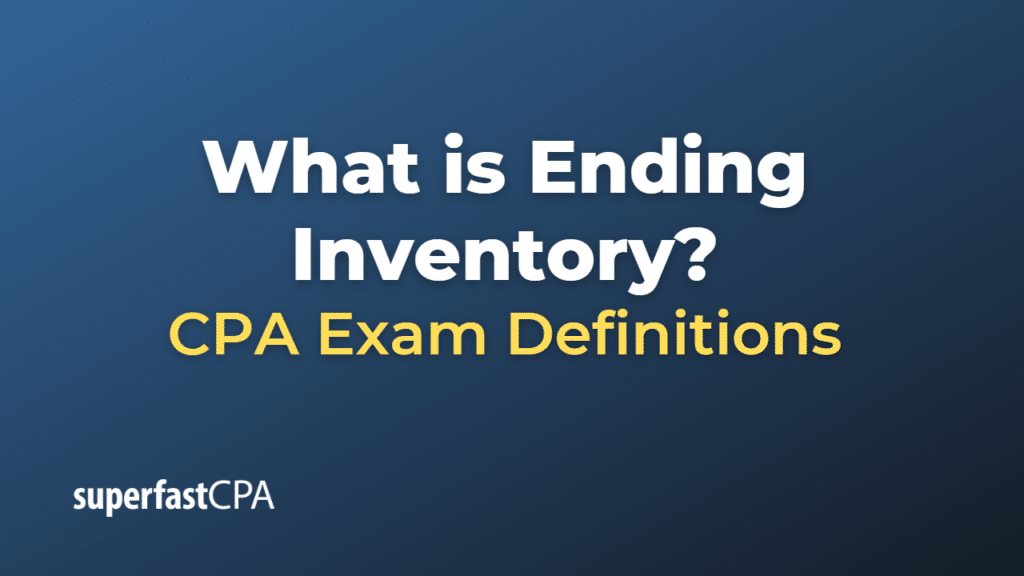Ending Inventory
Ending inventory is the amount of unsold goods or materials that a company has on hand at the end of a given accounting period, such as a month, quarter, or year. This inventory includes all the goods available for sale, from raw materials and work-in-progress to finished goods.
The calculation of ending inventory is important for both operational and financial reasons. From an operational perspective, it helps a business determine how much inventory to order for the next period, based on sales forecasts and desired inventory levels. From a financial perspective, it affects several key financial statements.
On the balance sheet, ending inventory is reported as a current asset. It also affects the calculation of cost of goods sold (COGS) on the income statement. COGS is calculated as:
Beginning Inventory + Purchases During the Period – Ending Inventory = COGS
Moreover, the calculation of ending inventory affects the company’s reported profitability, as a higher COGS (resulting from a lower ending inventory) will lower gross profit, assuming sales remain constant.
To calculate ending inventory, you use the following formula:
Beginning Inventory + Purchases During the Period – Cost of Goods Sold = Ending Inventory
It’s crucial to note that companies can use different inventory valuation methods (FIFO, LIFO, weighted average, etc.) which can result in different values for ending inventory, especially when prices are changing.
Example of Ending Inventory
Suppose a retail clothing store starts the year with a beginning inventory of $10,000 (the cost value of all clothes it has in stock at the beginning of the year). During the year, it purchases an additional $50,000 worth of clothing to sell.
Let’s say, based on its sales during the year, it calculates its cost of goods sold (COGS) to be $45,000.
Now we can calculate the ending inventory using the formula:
Beginning Inventory + Purchases During the Period – Cost of Goods Sold = Ending Inventory
Plugging in the numbers:
$10,000 (beginning inventory) + $50,000 (purchases) – $45,000 (COGS) = $15,000
Therefore, the clothing store’s ending inventory at the end of the year is valued at $15,000.
This means that the cost value of the clothes that the store has left unsold at the end of the year is $15,000. The store will carry this inventory into the next year, and it will become next year’s beginning inventory.
Remember, these calculations are based on the cost of inventory to the business (what they paid for the clothing), not the retail selling price. Also, different inventory valuation methods (like LIFO, FIFO, or weighted average) could result in different ending inventory values if the cost the store pays for clothing changes during the year.













